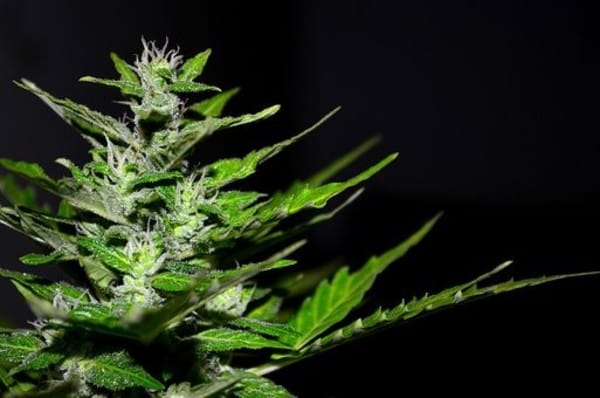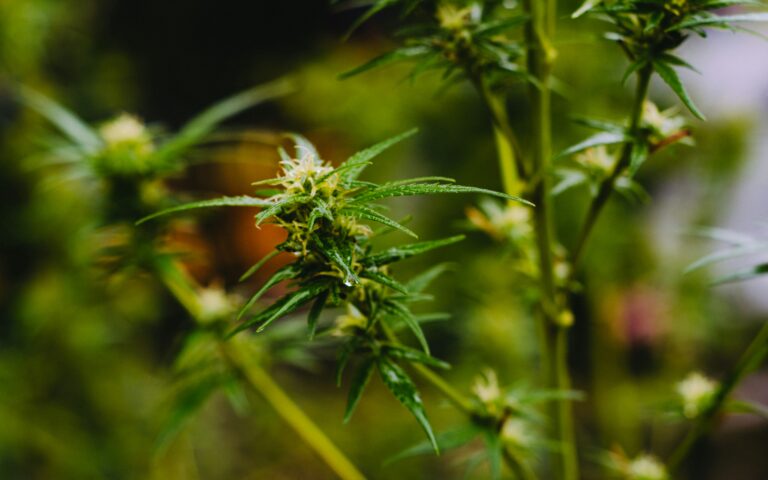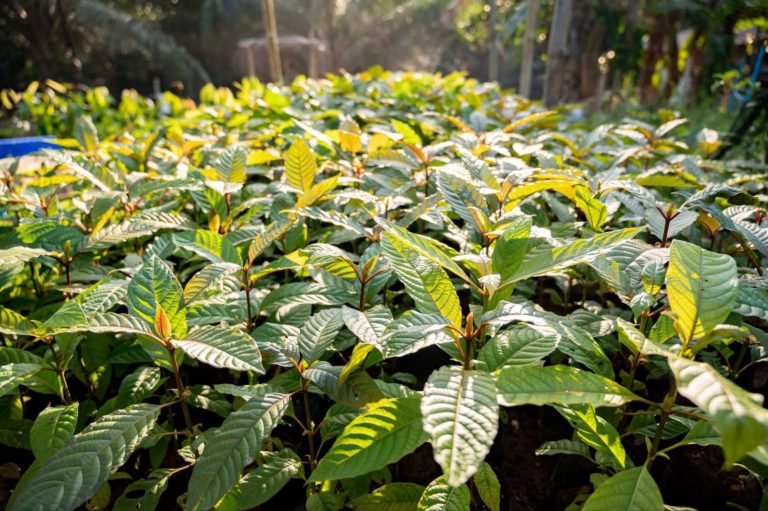
Terpenes Are The New Green!
Move over, THC: These lesser-known compounds are taking center stage in the conversation around cannabis
What are terpenes?
Ever burned a lavender candle to help you relax before bed? Washed your dishes with citrus-based soap? Inhaled deeply in a pine forest to clear your head? If so, you’ve already experienced the health benefits of terpenes.
Terpenes (pronounced “TER-peens”) are the aromatic oils that give plants their flavor and scent. They’re responsible for the smell of plants like basil, cinnamon, lemon—and cannabis.
Why do terpenes matter?
Research shows that terpenes in cannabis provide more than just a pungent smell—they’re the x-factor that make certain cannabis strains sedative and relaxing, and others euphoric and energizing. Historically, studies have focused on cannabinoid compounds like CBD and THC. But for connoisseurs, discussions about terpenes are replacing the age-old “indica versus sativa” debate. At Kindland, Adrienne Airhart argues terpenes are the best way to predict how a strain will affect you:
While indica and sativa are easy ways to classify weed strains, the terpene profile of a plant will really tell you what will happen to your body when you get high.
Research also indicates terpenes increase the effectiveness of cannabis (studies show THC extracts containing terpenes produce effects 330% greater than THC alone).
What is the entourage effect?
Terpenes don’t simply determine the character and intensity of a cannabis high—they’re essential to the medicinal properties of the plant. Many experts say CBD and THC should be consumed in concert with terpenes and other compounds to produce maximum therapeutic results. This synergistic blend of cannabis plant compounds is called “the entourage effect.” Much like the Avengers or the Beatles, the whole group of compounds working together ends up being greater than the sum of its individual parts.
What is whole plant medicine?
Many patients report better results from using whole plant cannabis medicines than from synthetic, THC-only prescription medications. In a 2011 study, less than 2% of participants preferred synthetic THC pharmaceuticals over the natural plant. In a 1991 survey of oncologists, the majority considered smoked marijuana “more effective than the legally available oral synthetic.” Psychopharmacologist Ethan Russo argues that terpenes and the entourage effect play a key role in increasing cerebral blood flow, enhancing brain activity, killing respiratory pathogens, and supporting anti-inflammatory activity.
How do you choose a strain?
There’s a reason why cannabis aficionados call it a feast for the nose and budtenders encourage you to smell the plant material, inhaling the bouquet deeply as you would a fine wine. The aroma indicates which terpenes a strain contains, and helps users anticipate what kind of effect the strain will deliver. And while there are more than 200 different terpenes found in cannabis, these are the primary players you’ll encounter when selecting your strain.
Myrcene
Myrcene is the most common terpene in cannabis. Also found in bay leaves, eucalyptus, lemongrass, and mango, myrcene’s aroma is described as musky and earthy (it’s a major contributor to the skunky smell cannabis is famous for). Myrcene has a medicinal properties unique among terpenes: it increases permeability of the blood-brain barrier, which helps the effects of cannabis take place more quickly. Myrcene-rich cannabis has a sedative, calming and relaxing effect, which makes it great for anxiety, pain relief, and insomnia. (Even doctors note how myrcene-heavy strains can lead the fabled couch lock.)
Pinene
Pinene’s distinct aroma is similar to pine and fir, and it’s found in many conifers, as well as in rosemary, dill, basil, and parsley. Research shows that some of the unwanted side effects of THC, such as paranoia and memory loss, may be reduced by pinene. It is anti-inflammatory and increases airflow to the lungs; users say it’s great for focus and concentration***.***
Limonene
Limonene has a sharp citrus smell, similar to oranges, lemons and limes. It’s found in citrus fruit rinds, rosemary, juniper and peppermint. Users say limonene-high strains like Pineapple Express and Super Lemon Haze elevate mood and energy levels, and is useful in treating depression.
Beta-caryophyllene
Found in Thai basil, cloves, cinnamon leaves, cotton, and black pepper, the scent of beta-caryophyllene is spicy, woody, and peppery. Biology fun fact: beta-caryophyllene is the only terpene that binds directly to the peripheral cannabinoid receptor CB2—all other terpenes interact with CB1 (for more on this topic, check out “The Endocannabinoid System For Dummies”). Users say beta-caryophyllene provides “body buzz,” and research shows it may be highly effective in the treatment of chronic pain.
Linalool
Linalool smells similar to floral and lavender, and it’s found in lavender, citrus, laurels, birch, coriander, and rosewood. Linalool has been used for thousands of years as a sleep aid, and it’s also helpful in treating acne. Strains high in linalool like LA Confidential or Lavender Haze are BOTH relaxing and anti-inflammatory. Linalool helps users manage stress, and can also lessen the anxiety some people experience with pure THC.
Humulene
Humulene is found in hops—it’s what gives beer its distinct ‘hoppy’ aroma.
Several studies have shown humulene to have anti-inflammatory properties; others have shown it to be an anti-cancer agent. (HERB sang humulene’s praises in an article entitled “The Anti-Inflammatory, Cancer Killing Terpene That Smells Like Beer.”)
Terpinolene
Terpinolene is used widely in soaps and perfumes, and is found in apples, tea treas, lilacs, and cumin. It has a piney, smoky scent with some herbal and floral notes. Terpinolene is anti-fungal, anti-bacterial, and useful for helping insomnia and reducing anxiety. Tea tree oil and the famous Sour Diesel strain are both high in terpinolene.
Camphene
Camphene is present in turpentine, camphor oil, and citronella oil. Its smell is described as pungent and damp. When mixed with Vitamin C, camphene becomes a powerful antioxidant, and studies indicate it may be able to treat cardiovascular disease.
Author bio:Jennifer Boeder is a Los Angeles-based cannabis writer. Her work has appeared in Cannabis Culture, Chicagoist, Wonkette, PUSH Mag, Built In Chicago, Gapers Block, The Urbaness, and The Tylt. You can follow her onTwitter.







